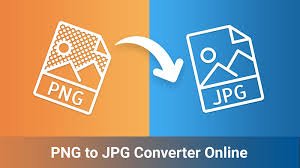
Are you tired of wrestling with image formats, trying to convert your PNG files to JPG without losing quality? You’re not alone! In a world where visuals speak louder than words, having the right format can make all the difference. But with countless converters available—some free and some paid—how do you know which one truly delivers? In this post, we’ll pit free versus paid PNG to JPG converters against each other in an epic showdown. From user-friendliness to quality output and speed, we’ll explore every angle to help you choose the converter that reigns supreme for your needs. Buckle up as we dive into the ultimate conversion battle!
Introduction to PNG and JPG image formats
When it comes to digital images, the battle between PNG and JPG formats is a common one. Both have their unique advantages, but sometimes you need to convert your PNG files into JPGs for various reasons. Maybe you’re looking to save space or want better compatibility with certain platforms. Whatever the case may be, finding the right tool for this task can make all the difference.
Enter the world of PNG to JPG image converter—a realm filled with both free and paid options that promise quick solutions at your fingertips. But how do you choose? Are those free tools up to par, or should you invest in a premium converter? Join us as we explore these two categories, weigh their pros and cons, and help you find out which type reigns supreme in this conversion conundrum!
Why would someone need to convert PNG to JPG?
There are several reasons why someone might need to convert PNG images to JPG format.
PNG files are great for graphics with transparent backgrounds and high quality, but they often come with larger file sizes. This can be inconvenient when storage space is limited or when you want faster loading times on a website.
JPGs, on the other hand, compress images more effectively. They maintain decent quality while significantly reducing file size. This makes them ideal for online sharing and social media platforms where quick access matters.
Additionally, many applications and devices prefer JPG formats due to their widespread compatibility. Converting ensures that your images will display correctly across various platforms without any hiccups.
For photographers looking to share their work quickly or web designers optimizing site speed, switching from PNG to JPG can be a smart move in the digital landscape.
Free vs Paid converters – what’s the difference?
When it comes to PNG to JPG image converters, the choice between free and paid options can significantly impact your experience. Free converters often attract users with their cost-effectiveness but may come with limitations.
Many free tools have basic features tailored for casual users. They usually allow simple drag-and-drop functionality, making them easy to use. However, these platforms might lack advanced editing capabilities or batch processing options.
On the other hand, paid converters generally offer a more robust set of features. Users gain access to higher-quality conversions and additional functionalities like file compression and enhanced security measures.
While the upfront cost is a consideration, many find that quality and speed justify the expense over time. It’s essential to weigh your needs against what each type offers before making a decision on which converter suits you best.
Pros and cons of using a free converter
Free PNG to JPG converters can be tempting due to their cost-effectiveness. Users appreciate having access without spending a dime.
However, there are drawbacks. Many free tools often come with limitations on file size or quantity. This restriction can slow down your workflow if you regularly convert large batches of images.
Another concern is the potential for ads and pop-ups that clutter the user experience. These distractions can make the conversion process frustrating rather than straightforward.
Quality may also suffer when using free options. Some converters compromise image fidelity, leading to loss in detail or color accuracy after conversion.
Finally, security issues can’t be overlooked. Free services might not offer robust data protection, raising questions about privacy and safety when uploading sensitive files.
Pros and cons of using a paid converter
Using a paid PNG to JPG image converter often comes with significant advantages. One of the most appealing features is enhanced functionality. Many premium tools offer advanced options such as batch processing, allowing users to convert multiple files at once.
Customer support is another strong point. With a subscription or one-time fee, you can expect prompt assistance if issues arise during conversion. This level of reliability can save time and frustration.
On the flip side, cost is an obvious disadvantage. Subscription fees might not fit every budget, especially for casual users who only need to convert images occasionally.
Some paid converters may also have less user-friendly interfaces compared to their free counterparts. A more complex system could lead to confusion for those unfamiliar with advanced features.
Ultimately, weighing these factors helps in deciding whether a paid converter aligns with your specific needs and frequency of use.
Factors to consider when choosing a converter (ease of use, speed, features)
When selecting a PNG to JPG image converter, ease of use is paramount. Users prefer intuitive interfaces that require a minimal learning curve. A straightforward layout can save time and frustration.
Speed also plays a crucial role. No one wants to wait endlessly for their images to convert. Fast processing ensures you can get back to your tasks without unnecessary delays.
Features are important too. Some converters offer batch processing, allowing multiple files to be converted at once—a real time-saver! Others may include options for adjusting quality settings or adding filters before conversion.
Compatibility with different devices is another consideration. Whether you’re using a desktop, mobile device, or tablet, the converter should work seamlessly across platforms.
Lastly, check if there’s any file size limitation. Some tools restrict the size of files you can upload for conversion; knowing this upfront helps avoid surprises later on.
Comparison of popular free and paid converters
When comparing popular free and paid PNG to JPG image converters, several key players emerge. Free options like Online-Convert and Conversion offer basic conversion features without any cost. They are user-friendly but may lack advanced functionalities.
On the other hand, tools such as Adobe Photoshop or FileZilla provide greater flexibility and enhanced capabilities for a price. Users can enjoy batch processing, higher quality outputs, and additional editing features.
Speed is another differentiator. Free converters often have slower processing times during peak usage hours due to server overloads. Paid versions typically prioritize faster speeds, which can be vital for professionals on tight deadlines.
Quality of output also varies significantly between these two categories. While free converters may suffice for casual use, serious projects might require the superior quality that comes with premium software. Each option has its unique strengths depending on users’ specific needs.
Real user reviews and experiences with different converters
User experiences with PNG to JPG image converters vary widely based on personal needs and expectations. Many users praise free tools for their accessibility and ease of use. One user shared how a popular free converter streamlined their workflow, allowing quick batch conversions without the hassle of registration.
On the other hand, some encountered frustrations with ads or limited features in free options. A graphic designer noted that while they appreciated the cost savings, they often faced quality issues when converting complex images.
Paid converters receive mixed reviews too. Users generally appreciate the advanced functionalities like editing capabilities or superior output quality. However, occasional complaints arise about subscription models being confusing or higher costs than anticipated.
Ultimately, individual preferences play a significant role in shaping these experiences. What works wonders for one might not meet another’s specific needs at all.
Conclusion: which type of converter is best for you?
When choosing between free and paid PNG to JPG image converters, it largely depends on your specific needs. Free converters can be an excellent choice for casual users or those who only occasionally need to convert images. They provide essential functions without any cost, making them accessible to everyone.
On the other hand, if you frequently work with images or require advanced features like batch processing or high-quality output, investing in a paid converter might prove beneficial. Paid options usually come with added benefits such as faster conversion speeds and customer support.
Consider factors like ease of use and available features when making your decision. User reviews can also offer insight into what others have experienced with different tools. Ultimately, weighing these aspects against your own requirements will lead you to the ideal PNG to JPG image converter that suits your workflow perfectly.
